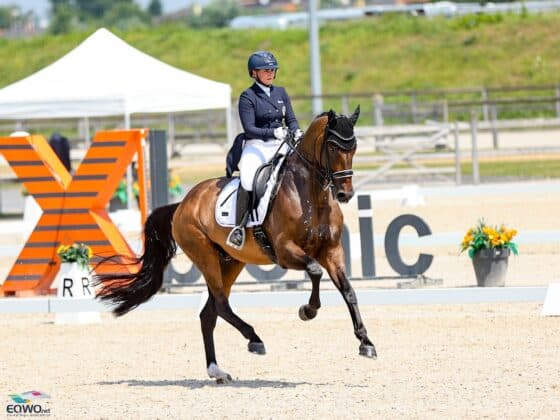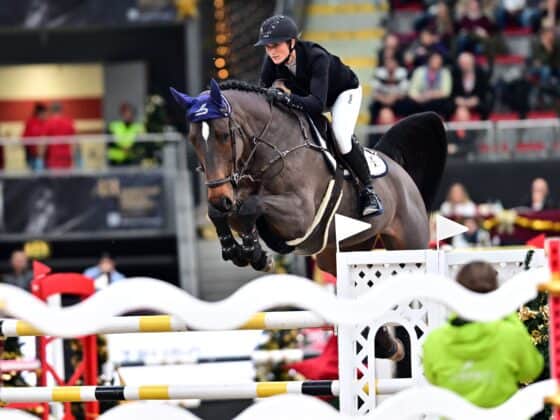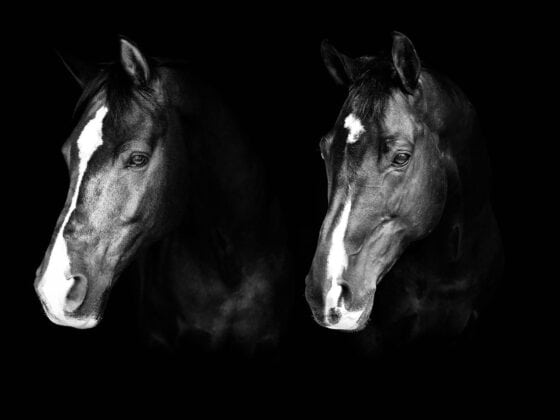Strength and fitness for your horse
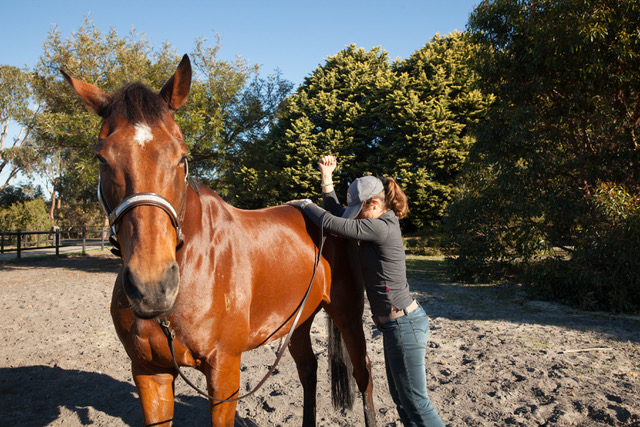
Adrienne Tomkinson | EQWO.net guest blog – It is important for horses in all disciplines to have the appropriate strength and fitness to perform the tasks asked of them. Conditioning for strength and fitness is an involved task. Many aspects need to be taken into consideration.
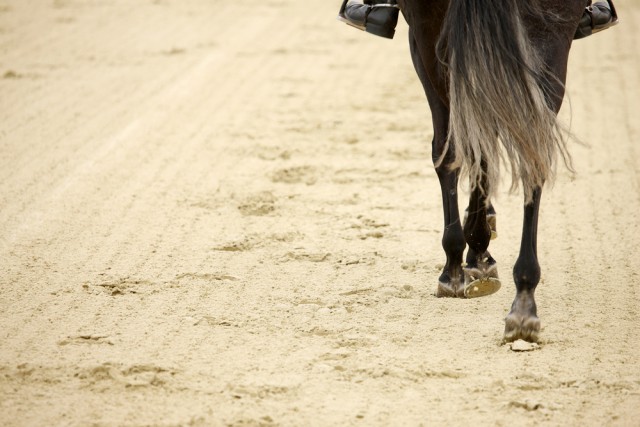
Muscles require energy. The two main energy production pathways are aerobic and anaerobic energy production. Anaerobic energy production has two types, one that produces lactic acid and the other anaerobic alactic. This is a very complex process. Horses use all forms of energy production during work. Tip – Your discipline denotes which pathways are used the most. In training it is important to include exercises that condition your horses energetic pathways.
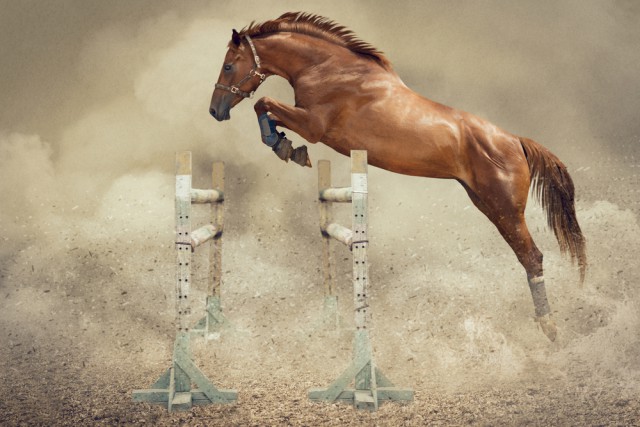
Muscle fibres, for example fast and slow twitch fibres, are often predominant depending on breed. Fast and slow twitch muscle fibres are associated with metabolism for energy production. Slow twitch fibres adapt and become more efficient at using fat stores instead of glycogen stores. High intensity exercises (fast twitch fibre adaptation) associated with short bursts of speed or that push for jumping, increase oxidative metabolism.
Tip – Training for fitness improves the efficiency of energy production. Time (usually periods of several months) is the factor here that allows the appropriate adaptation.
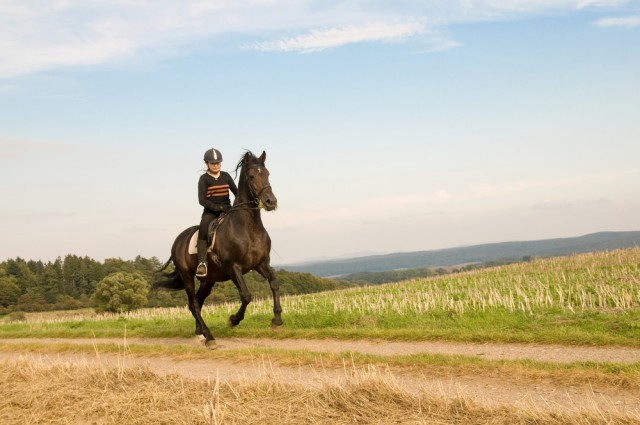
Conditioning training is important. Your horse will perform his required tasks more easily and risk of injury is reduced. This is not just in relation to muscle strength. Tendons and ligaments strengthen, bone density increases, cardiovascular and respiratory function improves.
Tip – Training plans should be designed over several months. In this time the body adapts and new capillaries are formed. These extra blood vessels are important to provide oxygen and nutrients whilst also removing the waste by-products of exercise.
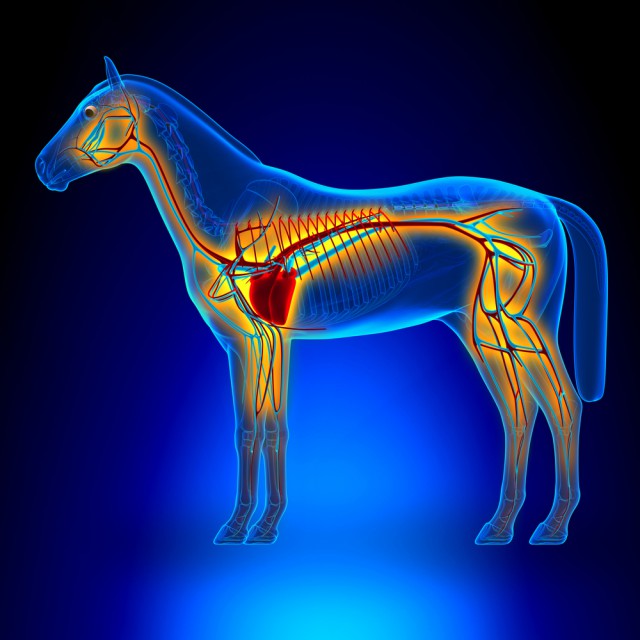
As you train harder (increasing intensity, duration and/or frequency) it is important to replenish the calorie intake for your horse. Athletic horses require more calories than pleasure horses. As your horses fitness increases so will his calorie requirements.
Tip – It can take up to 48 hours for energy sources to be replenished in the body. If your horse has used up his energy stores, fatigue sets in and performance is limited. This is usually the time fatigue related injuries occur.
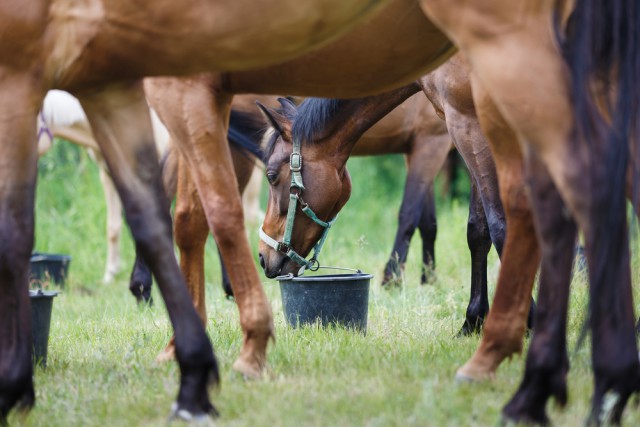
It is important to remember that although a horse may learn a new activity in a relatively short time, this does NOT means that his body has adapted. There are no ‘quick fixes’ to building up strength and muscle mass. If you want to increase strength and fitness in your horse, plan your training schedule over an extended period of time, with the help of an expert. And I always recommend interspersing training with regular massage to assist with optimal muscle function!!
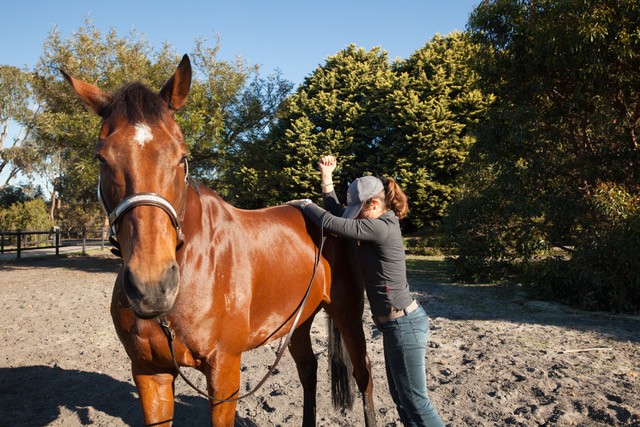
Have questions or would like more information? Please contact me for a non-binding consultation:
adrienne@impuls-methode.at
+43 676 847 131 857
Find this and other blogs on www.impuls-methode.at
Find out more about Adrienne Tomkinson
Adrienne Tomkinson on facebook
This article has been written by Adrienne Tomkinson for EQUESTRIAN WORLDWIDE – EQWO.net and isn´t a press release. Copying is prohibited.



